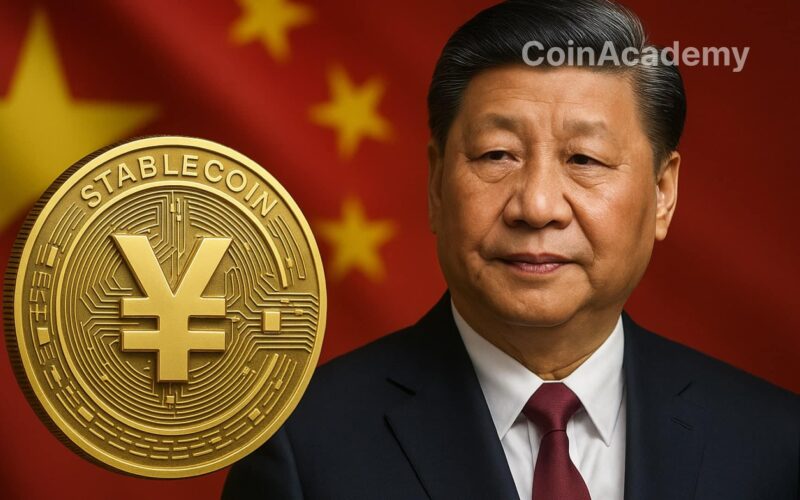The Chinese government is considering allowing stablecoins backed by the yuan for the first time in order to support the internationalization of its currency. According to leaks reported by Reuters, the State Council is set to review an ambitious roadmap this month, setting clear objectives for the offshore use of the yuan while defining risk management rules.
So far, the official stance has exclusively favored the digital yuan (e-CNY), controlled by the central bank. But faced with the dominance of dollar-backed stablecoins, the Chinese government seems keen on speeding up the process.
Why Beijing is Changing Its Tune
In reality, dollar stablecoins currently dominate the crypto markets, with $265 billion out of the total $279 billion, a vast majority. Their success lies in a simple promise: speed, minimal costs, and 24/7 availability. Arguments that the digital yuan, despite its advancements, still struggles to establish on an international level.
Meanwhile, the yuan is slipping. In June 2025, its share in global payments dropped to 2.88%, its lowest level in two years, far behind the dollar (47%). In this context, introducing an official stablecoin in yuan could serve as a strategic tool to breathe new life into the Chinese currency on a global stage.
The Race with Washington
The pressure isn’t just about numbers. In the United States, the Trump administration has already implemented a legal framework to regulate stablecoins through the GENIUS Act, paving the way for clear and potentially favorable regulations for American players. Beijing, which has never hidden its desire to reduce dependency on the dollar, cannot overlook this dynamic.
At the same time, Hong Kong is working to attract issuers through a dedicated licensing regime for stablecoins backed by fiat currencies. On the mainland, the PBoC has strengthened its e-CNY pilot and established a center dedicated to its international development. But experience shows that the digital yuan alone will not be sufficient to compete with the dollar ecosystem.
Opportunities… but also Concerns
A stablecoin in yuan would provide a direct alternative to industry giants such as Tether (USDT) and Circle (USDC). For the crypto markets, it would be a credible new player capable of diversifying capital flows. For international trade, it would offer the opportunity to settle transactions in yuan without relying on Western banking systems.
But openness will not be without limits. Authorities remain extremely cautious about the risks of speculation and illegal uses of stablecoins. This summer, Beijing reiterated its vigilance by cracking down on certain promotions deemed abusive and warning against fraud related to tokens indexed to fiat currencies.
A Monetary Battle Ahead
The potential launch of a stablecoin in yuan marks a strategic turning point. China would no longer settle for a centralized e-CNY but would seek to establish itself in the global financial ‘plumbing’ dominated by the dollar. The question remains whether Beijing will fully embrace this shift or prefer to keep the yuan within the confines of its own control perimeter.
One thing is certain: the stablecoin market equilibrium could be radically disrupted if China decides to enter the arena.




